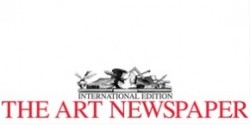Tuesday through Sunday from 12:00 until 21:00
Closed Monday
Admission is Free


As violence escalates in Ukraine, the Pinchuk Art Centre in Kiev, founded by the Ukrainian billionaire and collector Victor Pinchuk, is readying the exhibition “Fear and Hope” (17 May-5 October). For the show, three young Ukrainian artists reflect on the philosophical rather than political roots of the country’s current crisis, its relationship to Russia and its Soviet past.
Bjorn Geldhof, the Pinchuk Art Centre’s deputy artistic director and the curator of the exhibition, said in a Skype interview from Kiev on Friday that the lineup of works is still being finalised, but that it would include prescient older works by Nikita Kadan, Zhanna Kadyrova, and Artem Volokitin as well as newly-commissioned pieces. As he spoke, clashes in Odessa would leave dozens dead by the day’s end.
“Life has really changed,” said Kadyrova, who was in Brazil on an artist’s residency programme when violence erupted in Kiev in February. She is working on an as yet untitled project for “Fear and Hope”: a charred wall in the shape of Ukraine reminiscent of a burnt-out building on Maidan Square that became a symbol of the protests’ resilience. “It’s my reflection on the fact that our country is trying to break free of the Soviet past,” Kadyrova said.
Geldhof said that artists need a platform in which they can be both critical and non-partisan, and hopes the Pinchuk Art Centre can be that. (The venue’s six-storey building is just blocks from the site of the Maidan protests that toppled the former Ukrainian president Viktor Yanukovych in February.) “That’s the role that I think we can play, even though the conflict is really still ongoing, to give artists the space to respond to this new context in which they live and work,” he said “The artistic response [to the crisis] is an urgent one, you can see it in all their work, they’re dealing with it all the time.”